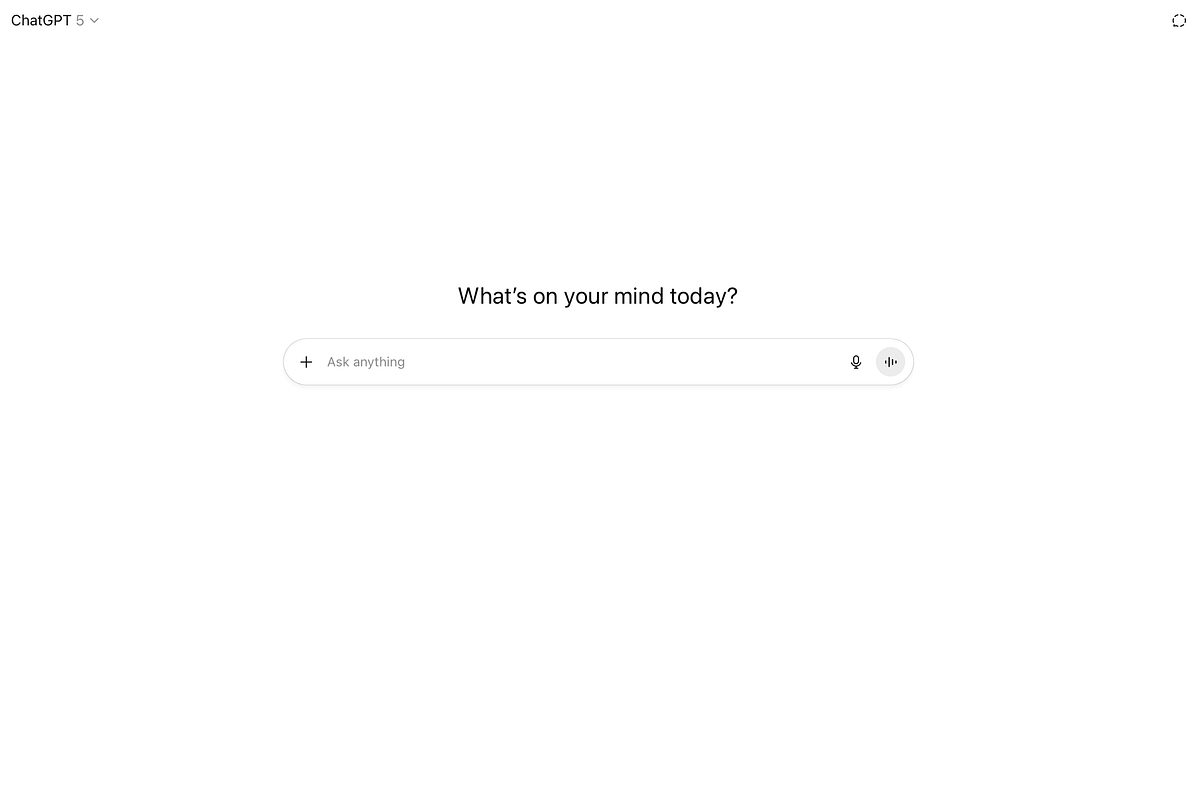
"Have you noticed that all popular AI tools look the same? They offer you an input field and invite you to express your intention. Take ChatGPT, for example. It's basically a blank canvas that invites you to explain the task you want to complete. All too often, expressing intent takes a significant amount of time. As a result, we can feel that we are having a prompt treadmill situation ( https://uxplanet.org/5-things-to-do-to-avoid-prompt-treadmill-when-crafting-design-with-ai-0569d4894473) when we are stuck in progress and cannot move forward."
"When you start typing, you will see a list of contextual prompt examples that the tool generates for you in real time. But once you reach a certain complexity in your prompt, the system stops offering your recommendations, and now you are on your own doing this task. You need to hit submit and see results that ChatGPT will generate for you."
Popular AI tools present a blank-canvas input field that asks users to express intentions in free text. ChatGPT's minimalist UI provides contextual suggestions while typing but stops offering help when prompts become complex, leaving users to craft detailed instructions alone. Articulating intentions is time-consuming, with average people taking around a minute to explain goals, which creates a 'prompt treadmill' and stalls progress. Chat-based, text-heavy interfaces become less effective as task complexity grows. No simple fix exists, but interface design changes and alternative interaction paradigms can reduce the burden of intention articulation.
Read at Medium
Unable to calculate read time
Collection
[
|
...
]